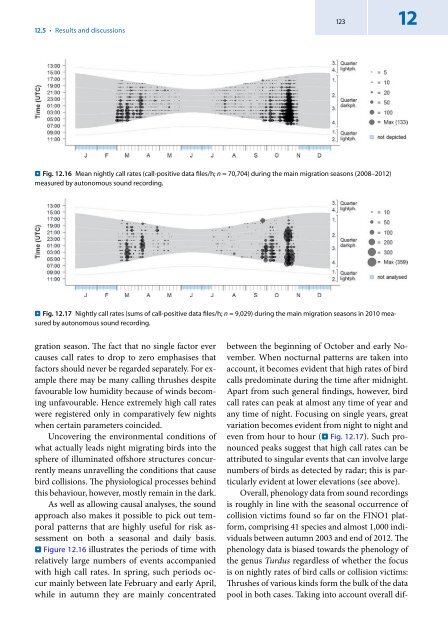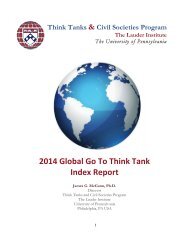bok%3A978-3-658-02462-8.pdf?auth66=1398409209_a0514c2b8e531c058ab8b810a0cad74d&ext=
bok%3A978-3-658-02462-8.pdf?auth66=1398409209_a0514c2b8e531c058ab8b810a0cad74d&ext=
bok%3A978-3-658-02462-8.pdf?auth66=1398409209_a0514c2b8e531c058ab8b810a0cad74d&ext=
- No tags were found...
You also want an ePaper? Increase the reach of your titles
YUMPU automatically turns print PDFs into web optimized ePapers that Google loves.
12.5 • Results and discussions123 12..Fig. 12.16 Mean nightly call rates (call-positive data files/h; n = 70,704) during the main migration seasons (2008–2012)measured by autonomous sound recording...Fig. 12.17 Nightly call rates (sums of call-positive data files/h; n = 9,029) during the main migration seasons in 2010 measuredby autonomous sound recording.gration season. The fact that no single factor evercauses call rates to drop to zero emphasises thatfactors should never be regarded separately. For examplethere may be many calling thrushes despitefavourable low humidity because of winds becomingunfavourable. Hence extremely high call rateswere registered only in comparatively few nightswhen certain parameters coincided.Uncovering the environmental conditions ofwhat actually leads night migrating birds into thesphere of illuminated offshore structures concurrentlymeans unravelling the conditions that causebird collisions. The physiological processes behindthis behaviour, however, mostly remain in the dark.As well as allowing causal analyses, the soundapproach also makes it possible to pick out temporalpatterns that are highly useful for risk assessmenton both a seasonal and daily basis.. Figure 12.16 illustrates the periods of time withrelatively large numbers of events accompaniedwith high call rates. In spring, such periods occurmainly between late February and early April,while in autumn they are mainly concentratedbetween the beginning of October and early November.When nocturnal patterns are taken intoaccount, it becomes evident that high rates of birdcalls predominate during the time after midnight.Apart from such general findings, however, birdcall rates can peak at almost any time of year andany time of night. Focusing on single years, greatvariation becomes evident from night to night andeven from hour to hour (. Fig. 12.17). Such pronouncedpeaks suggest that high call rates can beattributed to singular events that can involve largenumbers of birds as detected by radar; this is particularlyevident at lower elevations (see above).Overall, phenology data from sound recordingsis roughly in line with the seasonal occurrence ofcollision victims found so far on the FINO1 platform,comprising 41 species and almost 1,000 individualsbetween autumn 2003 and end of 2012. Thephenology data is biased towards the phenology ofthe genus Turdus regardless of whether the focusis on nightly rates of bird calls or collision victims:Thrushes of various kinds form the bulk of the datapool in both cases. Taking into account overall dif-




